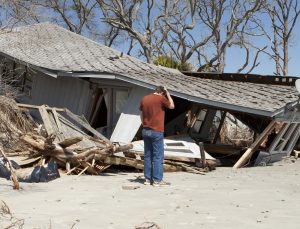 The cost of homeowners insurance has increased by 59% in the past decade, but COVID-19 may mitigate future increases, according to analysis from ValuePenguin.com, by LendingTree.
The cost of homeowners insurance has increased by 59% in the past decade, but COVID-19 may mitigate future increases, according to analysis from ValuePenguin.com, by LendingTree.
"The large number of Americans staying home right now has significantly lowered the risk of unattended fires or leaks as well as burglary," said Chris Moon, Insurance Product Manager at ValuePenguin.com. "While homeowners may file more claims in the short term as they notice things that they might not have had time for previously, once that “backlog” is dealt with, the long-term effect of staying at home is less risk of damage.”
ValuePenguin predicts homeowners insurance price increases in 44 states, and the greatest increases in home insurance costs will be in California, Nebraska, Illinois, South Dakota and Utah. Home insurance rate increases have outpaced the cumulative rate of inflation (9.14%) according to data going back five years in 31 states.
In states where insurers post very high loss ratios, rates tend to increase significantly in the following years. For instance, California's devastating Camp Fire in 2018 led to $16.5 billion in wildfire damages. As a result, the state's insurance industry experienced a loss ratio well over 100%, and their rate filings for 2020 reflected the most aggressive increases in the country.
Homeowners who live in a 100-year floodplain have a 26% chance of their property being flooded at some point during the course of 30 years, the length of a typical mortgage, according to ValuePenguin. However, only a minority of properties located in a designated 100-year floodplain are insured against flooding.
In seven cities, less than 2% of homes in high-risk areas have flood insurance. Among those is Boise Idaho, where only one property reportedly has flood insurance while well over 8,000 homes are located in high-risk zones.
In Riverside, California; Detroit; and St. Louis just 0.9% of properties in 100-year floodplains have flood insurance.
The remaining cities with flood coverage ratios lower than 2% are Cleveland, Ohio (1.1%); Minneapolis (1.5%); and Youngstown, Ohio (1.8%).
Rising construction costs drive homeowners insurance premiums up, ValuePenguin notes. Homeowners insurance covers the cost of rebuilding or repairing residential structures, which is why insurer rates are influenced by increases in the local price of materials and labor. Where states have experienced severe disasters and a spike in construction demand, shortages have led to insurers raising their rates.

 DSNews The homepage of the servicing industry
DSNews The homepage of the servicing industry









